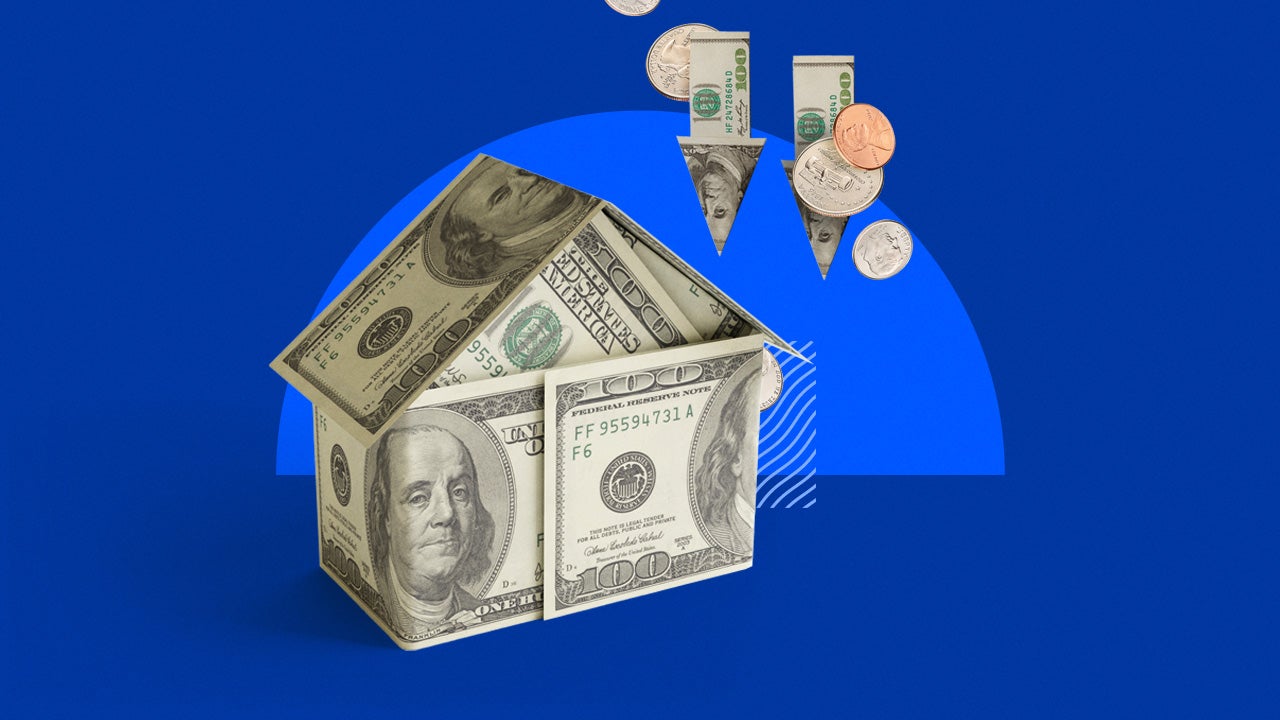Does mortgage prequalification affect your credit score?

Key takeaways
- A mortgage prequalification lets potential homebuyers know how big of a loan they can qualify for.
- Prequalification is faster and easier to get than preapproval.
- Getting prequalified usually doesn't negatively affect your credit score.
Mortgage prequalification gives you a basic estimate of the loan amount a lender might extend you to help finance a house purchase. It’s not as concrete as mortgage preapproval, but it can help give you a sense of what you’d qualify for. But does prequalification affect your credit score? Here’s a closer look.
What is mortgage prequalification?
A mortgage prequalification is an estimate of how much a borrower can be approved for based on their income and their financial obligations. Think of it as the first step in getting a sense of how much home you can afford — and, more specifically, how much you can finance. The primary benefit of being prequalified for a mortgage is that this estimate helps you budget for your home’s purchase price and your down payment.
The prequalification process is simpler than the preapproval process. You can typically complete it with a lender through a phone call or online form that asks for some basic financial information — usually, your income, debts and assets.
You don’t have to worry about how long prequalifications are good for because they don’t expire. That’s because a prequalification indicates what you might be able to borrow and doesn’t require official verification. As long as your credit and finances stay about the same (and mortgage rates stay relatively in the same range), the prequalification should still be a general idea of how big of a loan you could get.
Does prequalification affect your credit score?
Prequalification is a preliminary step that only involves what’s known as a soft credit inquiry and therefore does not affect your credit score.
“Mortgage prequalification does not impact your credit score like a mortgage preapproval,” says Troy Robillard, a licensed real estate agent with Premiere Plus Realty, a company with offices throughout Florida. “This is because the lender is not actually making a loan commitment when they prequalify you. They are simply giving you an estimate of how much money you can borrow.”
To prequalify, you must provide the lender with some basic financial information such as your income level, down payment amount and how much you would like to borrow. The lender uses that information along with a soft credit check to give you an idea of what mortgage rate you’re likely to qualify for and what your monthly mortgage payment is likely to be.
Soft credit inquiry vs. hard credit inquiry
Technically, the lender’s quick credit check is a “soft pull” of your credit history. Such soft inquiries don’t show up on your credit report, so they won’t affect your credit score. On the lender’s end, they see a snapshot of your credit history.
In contrast, a hard pull is a formal, more detailed inquiry for which the borrower must give permission. Lenders conduct hard pulls when they consider you for mortgage preapproval, which is a more thorough process. A hard pull shows up on your credit report and can impact your credit score.
“In my experience, having your credit run all over town can lower your score 5-10 points, but one pull has little to no impact on score,” says Steve Hill of SBC Lending, a brokerage in Southern California.
How to improve your credit before getting a mortgage
Before obtaining a mortgage, it’s ideal to check your credit reports and see what your prospective lenders will see. If your credit score is a little low, use these strategies to improve your credit:
- Build a stable payment history with your lenders: Since your payment history comprises 35 percent of your credit score, on-time payments are the most effective way to increase your score.
- Lower your credit utilization: You want to keep your balance low relative to your credit line. If you have a credit card with a $2,000 limit, you don’t want to exceed 30 percent usage (about $650). Doing this shows lenders you can use your credit line responsibly.
- Have a good credit mix: Mortgage lenders want to see you can balance revolving credit lines (credit cards) while also making timely payments on installment accounts (car, student, personal loans).
- Report inaccurate information: If you find incorrect information on one of your credit reports, contact the credit bureau and follow its tips to dispute the item.
Ultimately, you want your credit score to be above 700, as it grants you access to lower interest rates. This reduces the total mortgage costs and makes you a better candidate for approval.
Pros and cons of prequalification
While getting prequalified for a mortgage can be a helpful step, there are also some drawbacks to consider.
Pros of mortgage prequalification
- Getting a better understanding of your budget: “A prequalification serves as a useful tool for buyers by estimating their borrowing capacity,” says David A. Krebs, a licensed mortgage broker with DAK Mortgage in Miami, Florida. You’ll avoid sticker shock by going through this process early, especially if you’re buying your first home, by understanding closing costs and how much of a down payment you’ll need.
- Becoming more attractive to sellers: A prequalification can put you in a “more competitive position in the bidding process,” says Robillard. Some Realtors and sellers might request a prequalification letter before they’ll let you see the property, especially in more in-demand markets. After prequalification, “You will receive a prequalification letter, similar to a preapproval letter,” says Krebs. “Please note that it may not carry the same weight [with home sellers as preapproval] since it is based on limited information.”
- Learning more about your loan options: Although prequalification is not as formal of a process as preapproval, it gives a borrower the opportunity to provide some information to a lender on their income, assets and liabilities. Now that the lender has this information, it might inform you about the different types of mortgages that’d fit your situation and potentially any first-time homebuyer programs or assistance you qualify for.
- Getting organized: Applying for and getting prequalified helps you take stock of your finances. You might learn you can buy while putting less money down than you thought or discover your credit score needs a boost. Taking this first step helps you make more informed decisions as you move toward homeownership.
Cons of mortgage prequalification
- It’s not a guarantee: The purpose of prequalification is to provide a general estimate of how big of a mortgage you might qualify for. However, the lender is not actually making a loan commitment. This could cause challenges later if you do not end up qualifying for as much as you hoped or expected.
- Doesn’t hold as much weight as preapproval: Because prequalification is not a guarantee from a lender, it does not carry the same weight when you’re negotiating with home sellers. Taking the extra time to get preapproved can be a better way to show sellers that you’re a serious buyer.
Should I get prequalified for a mortgage?
When contemplating whether to get prequalified for a mortgage, there are some key considerations to keep in mind.
Perhaps the biggest question is: Where are you on your homebuying journey? Getting prequalified can be a more valuable step before you’ve actually begun shopping for a home and simply want to get a general idea of how much mortgage you might be eligible for. Doing so can help you set a budget for buying a home.
Prequalification can also be a good idea if you’re still learning about the various mortgage options and are curious about what types of mortgages might be available to you.
However, if you’re already house hunting or found a home you want to make an offer on, you might opt for a mortgage preapproval since it better shows a lender’s commitment to fund your loan than prequalification. This can be especially helpful if the home seller has received multiple offers and wants to see that you’re a serious potential buyer.
Next steps: How to get prequalified
Getting prequalified for a mortgage is a relatively easy process. Here’s how to do it.
- Research lenders: The first step to getting prequalified should be researching and comparing various lenders, including reading lender reviews online from previous customers.
- Compare rates: When shopping around and researching mortgage lenders, be sure to compare their interest rates. Getting the most competitive interest rate possible can save you thousands over the life of your loan.
- Request prequalification: Once you have a mortgage lender in mind, you can typically request a prequalification online or by phone. Many lenders offer a simple online application.
After you’ve prequalified, you can start shopping around for homes — or at least, know what category on the real estate websites to look at. You can even tour some properties, prequalification letter in hand. There’s no downside to prequalification, as long as you understand it’s a rough estimate, not a binding offer.
Think of it as the initial step on the road to getting your mortgage. The next step? Going for preapproval — a more committed agreement from a lender to loan you a certain amount. Then, you can start making serious bids on that dream home.







